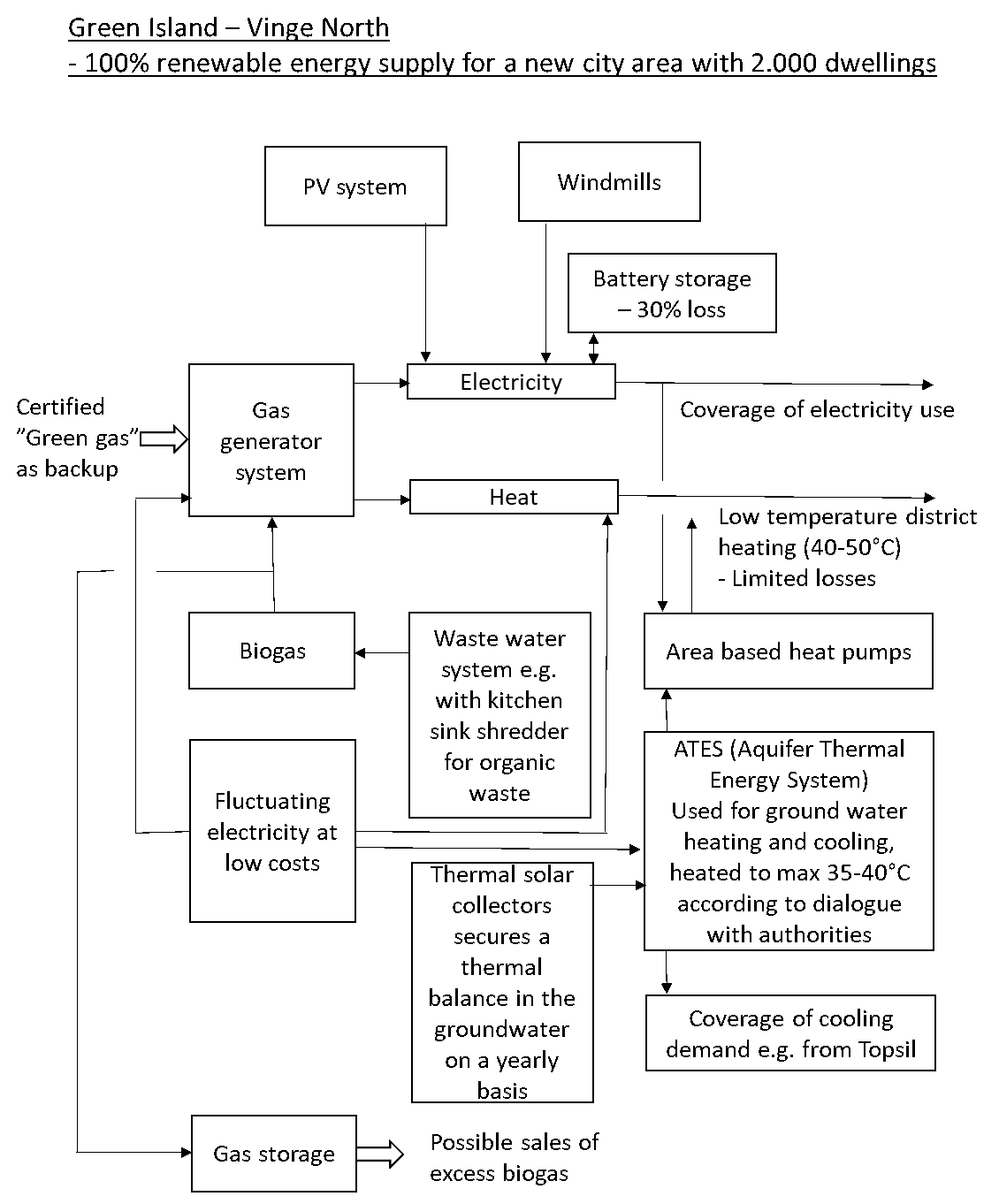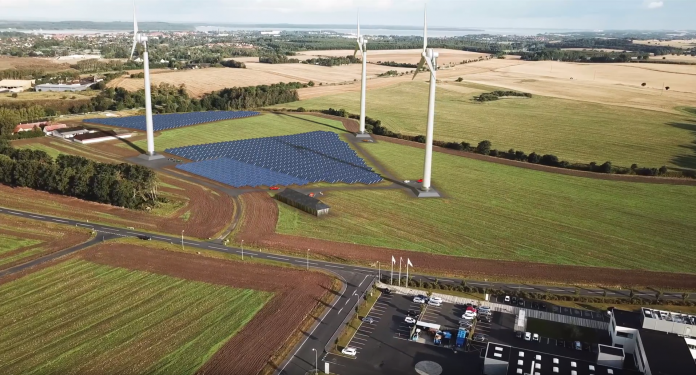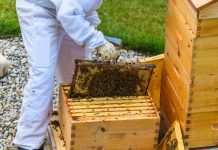The fossil free local city area development with Aquifer Thermal Energy Storage (ATES) at Vinge in Denmark with help from Green Island
 At Vinge North, in the municipality of Frederikssund, the Danish company, Green Island works on realising a 100% renewable energy community by combining the most economic technologies in a cost-effective way for the future inhabitants.
At Vinge North, in the municipality of Frederikssund, the Danish company, Green Island works on realising a 100% renewable energy community by combining the most economic technologies in a cost-effective way for the future inhabitants.
Excess heat from the neighbour manufacturer Topsil will be introduced into the ATES groundwater storage together with solar heating, and in the heating season low temperature operation of the district heating network will be combined with use of heat pumps.
Electricity use will utilise both windmill electricity and PV electricity. Besides building integrated PV ( BIPV) will be utilised in the housing areas. This is combined with use of fluctuating electricity at low costs by help of so-called aggregators with a battery storage.
At the same time, optimised use of biogas-based electricity and heat production will be introduced e.g. utilising wastewater and organic waste, with possible backup from green gas.

Experiences concerning ATES operation in practice
When you aim to realise groundwater-based heating and cooling by help of ATES systems (Aquifer Thermal Energy Storage) in combination with heat pumps, then you will always be dependent on a positive feedback from the authorities. In Denmark it has been confirmed in practice by the company Enopsol, that this becomes possible if you can document, that you will obtain a so-called thermal balance for the groundwater during a one-year period.
In most cases you can obtain a heating of the groundwater storage by up to 20°C e.g. by using the groundwater for cooling needs in buildings. And if you combine this with a heat pump operation, which supplies heat during the heating season, then this can be the basis for lowering the groundwater temperature to the normal level at 8°C after one year of operation.
Practical experience has here shown that it is very important to combine this policy with a follow-up on the practical operation of both the cooling and heating systems in the buildings.
If you do not have any cooling needs available, you can still operate an ATES system in a useful way. In this case, you need to find another way of heating the groundwater in the summer half year. Here use of solar thermal collectors can be an alternative to secure this in practice.
At the same time there has been a positive dialogue with the authorities in Denmark to be allowed to raise the groundwater temperatures to 30 – 35°C during summer. This can be important to increase the storage capacity and reduce investment costs for realising ATES boreholes.
Peder Vejsig Pedersen
Green Island
Bloxhub, Bryghus Pladsen 8, 1473 Copenhagen K
pv@greenisland.dk , +45 20466755








